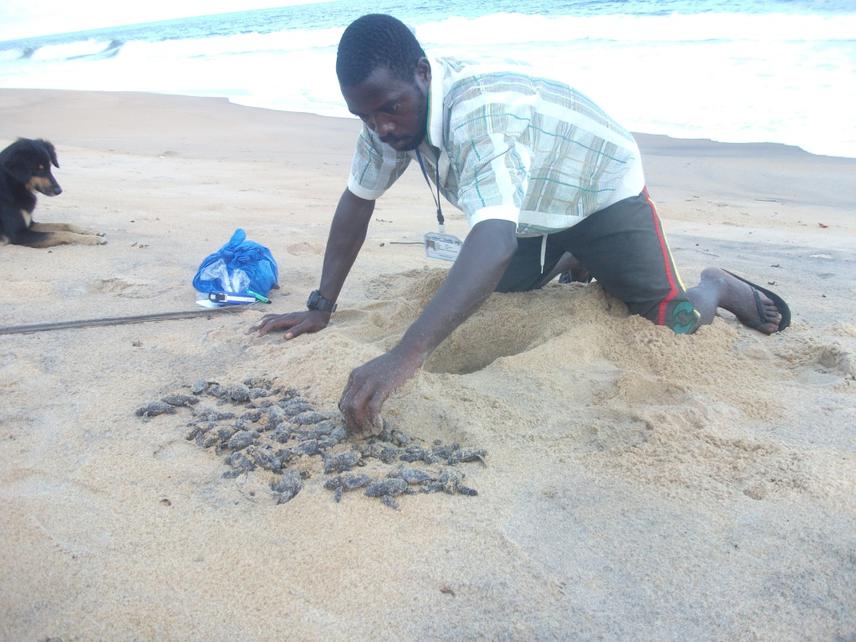Jose Gomez Penate
The goal of the project is replicate the sea turtles conservation activities already done in Mani beach
to the nearby beaches involving the local communities in the conservation of the sea turtle populations and contributing to their wellbeing through development projects.

Hatchlings olive ridley.
The project will be implemented in the beaches around Mani beach (4°32'N, 7°01'W). Mani beach is the most important nesting beach for marine turtles in Ivory Coast, and the most important nesting beach for leatherbacks in West Africa.
Research and conservation actions during the past nesting seasons in Mani beach have been conducted. As result, poachers (the main threat to sea turtles here) in Mani beach have drastically decreased. Unfortunately, at other beaches poachers remain a very common occurrence.
The goal of the project is replicate the sea turtles conservation activities already done in Mani beach to the nearby beaches. Thanks to the project, more than 1000 nesting sea turtles and their eggs will be protected by local populations of the village of Mani and the nearby villages. Of these 1 000 turtles, approximately the half will be leatherbacks, 450 olive-ridley and 50 green turtles. This can be made only with the cooperation of the local communities which realize all the field works and are favoured through the execution of development projects like the supply of a solar powered drinking water system, the distribution of solar lamps, etc.